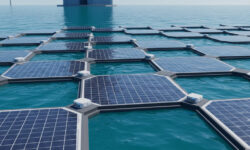
Displays quietly shape how we work, play, and learn. The screen on your wrist, the dash in your car, the giant wall at a stadium—all of them keep getting smaller in parts and brighter as a whole. A key reason is microLED: microscopic light‑emitting diodes arranged as pixels, driven by clever electronics and assembled with almost surgical precision. MicroLED is not hype. It solves real limits in current screens and is inching into products you can see today.
This article is a practical guide to microLEDs. We’ll keep the language simple while diving into what makes microLED different from LCD and OLED, how manufacturers actually build these screens, what problems remain, and where you’re likely to see them first. If you’re curious about buying one (or integrating them into a product), there’s a short checklist for you too.
What microLED actually is
A microLED display is made from very small, inorganic LEDs—often gallium nitride (GaN)—that produce light directly. Each pixel is a set of red, green, and blue subpixels (or a single blue subpixel with a color conversion layer) that you can switch and dim. No backlight. No color filter. Just light where you need it.
How it differs from LCD and OLED
- LCD: A white backlight shines through liquid crystals and color filters. Good efficiency at low brightness, mature, and cheap at scale. But blacks are never perfect because some light leaks through.
- OLED: Each pixel is an organic LED that emits light directly. Excellent black levels and contrast, very thin, flexible options. But the organic materials age, especially blue, and high brightness over time can cause image retention (often called burn‑in).
- microLED: Each pixel is an inorganic LED. You get OLED‑like perfect blacks, higher peak brightness, and better lifetime. Panels can be thin and efficient, with less risk of burn‑in and better behavior outdoors.
In short, microLED tries to combine the best parts of OLED (true blacks, per‑pixel control, thin design) with the best parts of LCD (durability, brightness, long life). That mix makes it a serious candidate for wearables, TVs, signage, AR devices, and automotive displays.
Why microLED matters now
The idea of tiny LEDs isn’t new. What’s changed is manufacturing maturity and system design. Companies have learned how to build more reliable emitters, transfer them to display backplanes at scale, and control them precisely. Meanwhile, users expect bright screens outside, thin devices, and long life with less power. MicroLED lines up well against those expectations.
Five practical advantages
- Real brightness: Peak brightness can be far beyond OLED. For big screens or sunlit environments, that’s a win.
- Per‑pixel black: Like OLED, microLED can switch a pixel fully off, delivering deep blacks and high contrast.
- Efficiency at high nits: At typical TV brightness, OLED can be efficient, but at very high brightness microLED often wins on watts per nit.
- Lifetime and burn‑in resistance: Inorganic LEDs age more slowly. There is still aging—but it’s less sensitive to static elements like logos or UI chrome.
- Ruggedness: Inorganic emitters and robust encapsulation can handle heat and stress better than many organics.
The anatomy of a microLED pixel
The heart of a microLED pixel is the emitter. Most designs use GaN for blue and green, and AlInGaP for red, though getting red to match efficiency can be tricky. An alternative route is to make only blue emitters and add a color conversion layer (quantum dots or phosphors) on top to convert blue to green and red. That simplifies manufacturing because you only produce one type of LED and pattern the conversion materials instead.
Backplanes and drivers
Pixels sit on a backplane that routes signals and power. For large displays, the backplane might be a glass panel with thin‑film transistors (LTPS or oxide TFT). For tiny AR microdisplays, the backplane can be a silicon chip, bonded directly to the microLED array—this is called a silicon backplane and allows very high pixel densities.
Each pixel needs to be dimmed smoothly. That can be done with PWM (pulse‑width modulation, rapidly switching the LED on and off) or analog control (varying current). PWM gives uniform color at low brightness but can introduce flicker if the frequency is too low. Good designs use high PWM frequencies and/or hybrid analog control to avoid eye strain and camera artifacts.
Uniformity and calibration
No two microLEDs are identical. Manufacturers bin emitters for brightness and color, add a black matrix to absorb stray light, and run a factory calibration so the panel looks even. Over time, displays can re‑calibrate to counter aging, similar to how OLED TVs run compensation cycles. Expect smart calibration to be a standard feature in serious microLED products.
How microLED displays are made
Building microLEDs is a production challenge with many steps. It’s not one magic trick; it’s a chain of them. Here’s the condensed version.
Step 1: Make millions of tiny LEDs
On a wafer (usually sapphire or sometimes silicon), manufacturers grow GaN layers and pattern thousands to millions of tiny emitters. They add contacts and test as much as possible at the wafer level. Testing early is critical—don’t move a bad LED down the line if you can help it.
Step 2: Move those LEDs onto a display backplane
This is the notorious mass transfer problem: placing vast numbers of tiny chips onto the right spots quickly and accurately. Several methods exist:
- Elastomer stamp transfer: A soft stamp picks up an array of LEDs and releases them on the backplane. High throughput but demands tight process control.
- Laser lift‑off and transfer: A laser detaches LEDs from the growth wafer, which are then assembled onto the target panel.
- Fluidic self‑assembly: LEDs flow in a liquid and “fall” into etched pockets on the backplane, guided by shape and surface chemistry.
- Monolithic approaches for microdisplays: For very small displays (like AR), the LEDs can be grown and patterned directly on a wafer, then bonded to a silicon driver chip. This avoids mass transfer but is limited in size.
Step 3: Connect, test, and repair
After placement, the LEDs must be electrically connected and encapsulated. Automated optical inspection finds dead or dim emitters. Panels often include redundant subpixels—spares that can be switched in if a pixel fails—along with laser repair to trim lines or reroute around defects. The combination of redundancy and repair is a big lever on yield and cost.
Step 4: Calibrate and seal
Final calibration maps brightness and color so the screen looks uniform. Moisture and oxygen are enemies of many materials (especially quantum dots), so a robust barrier layer is added. For wearables and outdoor signage, ingress protection is essential to handle sweat, rain, and temperature swings.
Image quality characteristics you can see
Specs are easy to copy, but the way a display looks and behaves over time matters more. Here’s how microLED tends to perform.
Brightness and HDR
MicroLED can hit very high peak brightness without the risk of organic material burn‑in. That boosts HDR highlights and helps in daylight. Important note: peak specs usually refer to small windows (for example, 10% of the screen). Sustained full‑screen brightness depends on thermal design and power.
Contrast and blacks
Because pixels switch fully off, you get near‑perfect blacks. That makes star fields, space scenes, and dark UI themes look clean without haloing or “bloom” from a backlight.
Color performance
With direct RGB emitters, color purity is excellent. If a panel uses blue LEDs with quantum dot color conversion, color can be wide and vibrant, but the long‑term stability of conversion materials is still an area of active engineering. Good encapsulation, better dot chemistry, and thermal control are all in the mix to keep colors stable for years.
Motion and flicker
Fast response is a given—LEDs switch extremely quickly. The more subtle bit is dimming method. High‑frequency PWM or analog current control can avoid visible flicker and rolling‑band artifacts when filming the display. If you’re buying, ask for the PWM frequency or whether the display uses hybrid dimming.
Power and lifetime, explained
At low average brightness (typical office use), OLED and microLED can both look efficient. As the requested brightness climbs, microLED’s inorganic nature often yields better luminous efficacy (lumens per watt). For battery‑constrained wearables or sun‑exposed signs, that matters.
Lifetime is not infinite. LEDs age, wires migrate, and encapsulants can yellow. However, compared with OLED, microLED usually delivers slower aging and less image retention. Static UI elements are less risky, though not risk‑free. Good products include pixel‑shifting and compensation to keep things even over time.
Where you’ll see microLED first
MicroLED is not a one‑product story. It arrives in niches where its strengths justify cost, then spreads as manufacturing scales. Here are the frontrunners.
Giant modular walls and premium signage
MicroLED tiles already light up airports, retail flagships, and control rooms. These systems use modular cabinets assembled into a seamless wall. Benefits include extreme brightness, high contrast, and serviceable parts. The catch is price and installation complexity. But for venues that want the best and brightest, it’s happening today.
Wearables and small devices
Smartwatches and fitness devices need outdoor‑readable, power‑efficient displays that last. MicroLED fits perfectly on paper. Some projects have hit roadblocks on cost and yields, and high‑profile plans have shifted. Still, the engineering case remains strong: small area, limited pixels, and battery demands all favor microLED as processes mature.
AR microdisplays and waveguides
To drive a waveguide in AR glasses, you need incredibly high brightness per unit area—millions of nits from a tiny imager. MicroLED on a silicon backplane is a leading candidate here. The workflow is different from TVs: think chip‑scale displays beaming into optics rather than a panel in a frame. If AR is part of your roadmap, keep microLED on your watchlist.
Automotive dashboards and HUDs
Cars are harsh environments: heat, cold, vibration, sunlight. MicroLED’s ruggedness and brightness are appealing. Expect to see it in instrument clusters, center stacks, and heads‑up displays, especially in premium models that value longevity and visibility.
What’s still hard
MicroLED’s toughest problems are manufacturing and materials stability. None of these are show‑stoppers, but they determine cost and reliability.
Mass transfer and yield
The transfer process must be fast, precise, and cheap. Every lost or misaligned subpixel hurts yield. The industry’s response is redundancy, better pick‑and‑place tooling, smarter stamps, and more pre‑transfer testing. If you watch earnings calls, you’ll hear “yield” a lot—that’s the knob that makes microLED commercially viable.
Red subpixels and color conversion
Red LEDs made from AlInGaP can be less efficient at tiny sizes and high temperatures. Blue‑only emitters plus quantum dot conversion are a compelling workaround. But dots need protection from oxygen, moisture, and heat. New encapsulants, barrier films, and dot chemistries (like perovskites with better stability) are being pushed to production.
Backplane choices
LTPS vs oxide TFT is a trade‑off between mobility, uniformity, and cost. Silicon backplanes deliver dense pixels for AR but do not scale to TV sizes affordably. You’ll see different backplanes per market segment; there is no single winner.
Calibration over time
Even with careful binning, displays drift. Software compensation, on‑device sensors, and periodic maintenance modes will be part of microLED ownership, especially for large walls doing mission‑critical work.
Buying or specifying a microLED? Questions to ask
- Pixel pitch: What is the distance between pixels? For a given viewing distance, this determines perceived sharpness. Smaller pitch means closer viewing.
- Brightness and PWM frequency: What is peak and sustained brightness? How is dimming done, and at what PWM frequency?
- Uniformity and calibration: Is the display factory‑calibrated? Does it support automatic recalibration?
- Serviceability: Can you swap tiles or modules? Is there pixel‑level redundancy?
- Seams and color matching: For modular walls, how visible are the seams after calibration?
- Barriers and IP rating: How is the display protected against moisture and dust?
- Warranty for static content: What does the vendor guarantee regarding image retention?
Common myths, addressed simply
“There’s no burn‑in, ever.”
Less likely, yes. Impossible, no. Inorganic LEDs age more slowly, but any emissive display can show wear from unchanging content. Good designs reduce the risk.
“You can make any size, super cheap.”
MicroLED scales in size, but cost does not magically disappear. Making and placing millions of tiny emitters with high yield is hard. Prices will drop with learning and volume, not overnight.
“MicroLED is always more efficient.”
It depends on brightness, content, and panel design. At low brightness, OLED can be very efficient. MicroLED often wins at higher brightness and with bright average scenes, especially outdoors.
Environmental notes you can verify
MicroLED avoids some of the organic materials used in OLED and can be modular and repairable, which helps reduce waste for large walls. However, epitaxy and processing are energy‑intensive, and some color conversion materials require careful handling. Expect sustainability claims to focus on lifetime energy savings and serviceability rather than low‑energy manufacturing.
What to watch over the next product cycles
Transfer breakthroughs
Better elastomer stamps, laser processes, and fluidic self‑assembly are lowering costs and improving yields. This is the single biggest lever for mainstream prices.
Quantum dots that last
Advances in quantum dot encapsulation and perovskite chemistry aim to keep colors stable for years at high brightness. Successful long‑term tests will open the door for more products.
Smaller pixel pitches
As pitch shrinks, microLED can move from signage and walls into more living rooms, with 4K and 8K at TV sizes that look seamless up close.
AR optics integration
More partnerships between microLED makers and waveguide/combiner companies will push compact, bright AR glasses forward. Efficiency through the full optical stack is the name of the game.
Glossary in plain words
- Pixel pitch: Distance between the centers of adjacent pixels. Smaller numbers mean finer detail up close.
- Backplane: The layer of transistors and wiring under the LEDs that control each pixel.
- Quantum dots: Tiny crystals that convert one color of light (usually blue) into another (green or red) with high efficiency.
- PWM: A way to dim by turning a pixel on and off quickly. The fraction of time “on” controls brightness.
- Mass transfer: Moving vast numbers of tiny LED chips from a growth wafer onto a display backplane.
- Redundancy: Extra subpixels or circuits that can replace failed ones to improve yield and lifetime.
A quick buyer’s scenario
Say you’re choosing a display wall for a bright lobby. You’re comparing a high‑end miniLED LCD, an OLED wall, and a microLED wall. If you expect sunlight and want a long‑lived installation that can run bright all day, microLED’s high sustained brightness and per‑pixel black may justify the budget—if the vendor offers strong calibration tools, tile‑level serviceability, and guarantees around color stability. If the budget is tight and ambient light is moderate, a well‑tuned miniLED LCD can still be a smart choice. OLED brings superb image quality but needs careful content and environment management to minimize retention risk in 24/7 use.
Design tips for product teams
- Thermal headroom: Give the panel room to breathe. Cooling improves both brightness and lifetime.
- Content design: Mix static and dynamic elements to reduce localized stress.
- Sensor feedback: Light sensors plus adaptive brightness can save power and extend life.
- Field calibration: Build in or specify automated calibration routines for service teams.
- EMI and cameras: Check PWM frequencies against any camera systems in the environment to avoid interference.
Bottom line
MicroLED is moving from promise to product. You’ll see it first wherever brightness, longevity, and serviceability matter more than sticker price. As the difficult parts—mass transfer, color conversion stability, and calibration—mature, it will spread to smaller devices and eventually more living rooms. You don’t need to be a display engineer to follow it. Just remember the three levers: how bright you need to be, how close people will look, and how long you want the panel to run.
Summary:
- MicroLED uses tiny inorganic LEDs for each pixel, combining per‑pixel blacks with high brightness and strong durability.
- It differs from LCD (no backlight) and OLED (inorganic emitters), often improving efficiency at high brightness and reducing burn‑in risk.
- Manufacturing hinges on mass transfer, backplane choice, calibration, and repair; yields drive cost.
- Expect early wins in modular walls, signage, AR microdisplays, wearables, and automotive displays.
- Key challenges are transfer yield, red emission efficiency, quantum dot stability, and long‑term calibration.
- When buying, ask about pixel pitch, brightness and PWM frequency, calibration, serviceability, and environmental protection.
- MicroLED’s spread will track improvements in transfer tech, color conversion, and pixel density.





